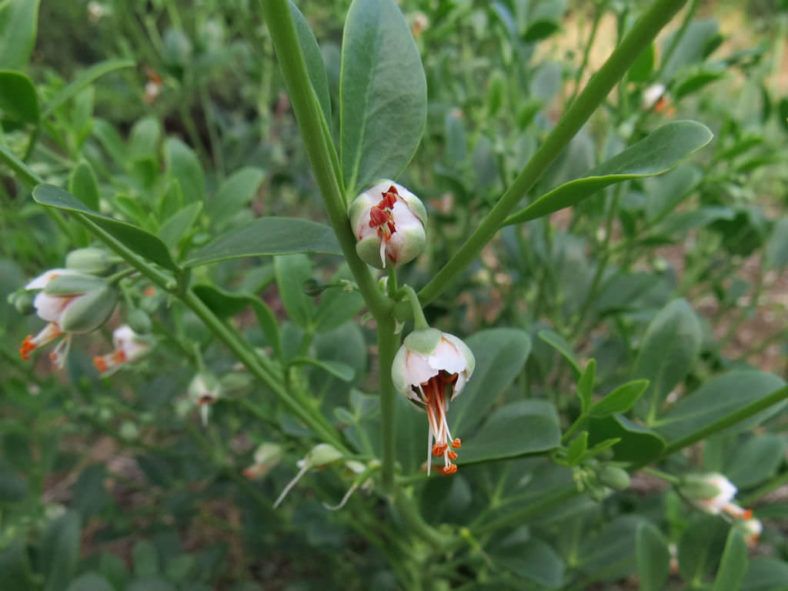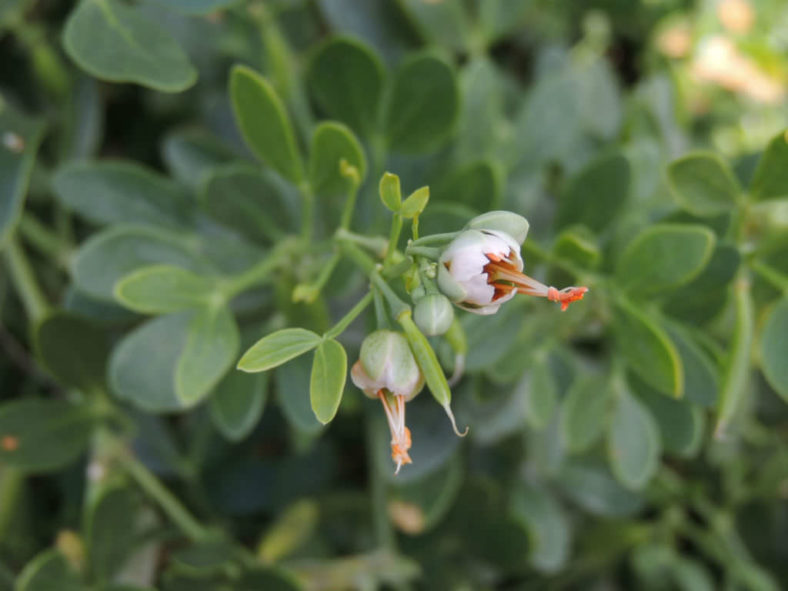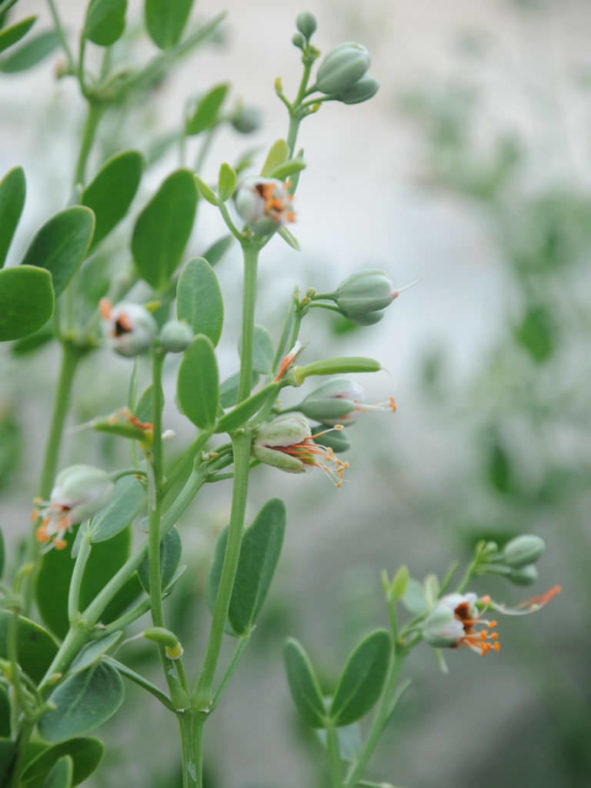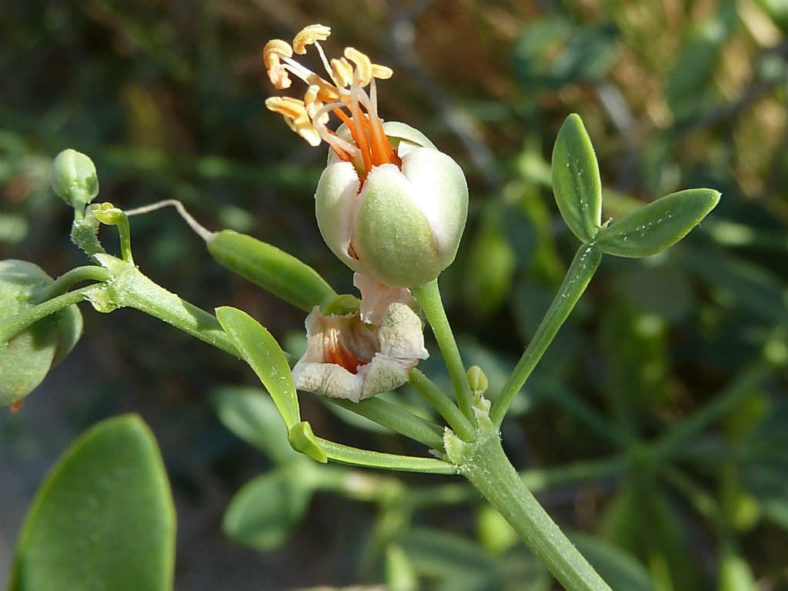Scientific Name
Zygophyllum fabago L.
Common Name(s)
Syrian Bean Caper
Synonym(s)
Zygophyllum fabagineum, Zygophyllum fabago subsp. fabago
Scientific Classification
Family: Zygophyllaceae
Subfamily: Zygophylloideae
Genus: Zygophyllum
Origin
Zygophyllum fabago is native to the Mediterranean Region and Central Asia. It grows in open, rocky areas and gravelly soils.
Description
Zygophyllum fabago is a shrubby plant with much-branched, spreading stems bearing green, somewhat succulent leaves with two leaflets. It can grow up to 3.3 feet (1 m) tall, branching from the thickened woody base and forming colonies. This plant is a perennial that acts as an annual in regions with cold winters. The leaflets are obovate, measuring up to 1.3 inches (3.3 cm) long and 0.8 inches (2 cm) wide.
The flowers have five petals varying in color from salmon to yellow or white with pinkish veins. They can reach up to 0.3 inches (0.7 cm) in diameter and appear in summer on stalks that can grow up to 0.4 inches (1 cm) long. The fruits are capsules that contain five seeds. They are oblong to cylindric, measuring up to 1.4 inches (3.5 cm) long and 0.25 inches (0.6 cm) in diameter.
This plant has invasive potential because of its long taproot that, even if fragmented, can produce a new plant. Also, its leaves have a hardy wax coating that protects it from herbicides. As a result, it is considered a noxious weed of economic importance in much of the western United States.

Hardiness
USDA hardiness zone 7a to 10b: from 0 °F (−17.8 °C) to 40 °F (+4.4 °C).
How to Grow and Care
Zygophyllum is found in many deserts and semi-deserts worldwide, including some of the aridest habitats where plant life is possible. The species is found in various habitats along hill slopes, dry rivers, ridges, and road verges in coarse sandy soil, calcareous sand, and brackish soil.
Species of Zygophyllum are usually not found in cultivation. However, some are very attractive with yellow, delicate petals and interesting fruits and will undoubtedly be suitable for growing in gardens.
Propagation can be done from seed or by taking cuttings in spring.
See more at Growing and Using Zygophyllum.
Links
- Back to genus Zygophyllum
- Succupedia: Browse succulents by Scientific Name, Common Name, Genus, Family, USDA Hardiness Zone, Origin, or cacti by Genus
Photo Gallery
Click on a photo to see a larger version.


